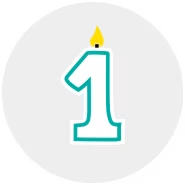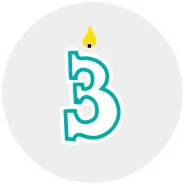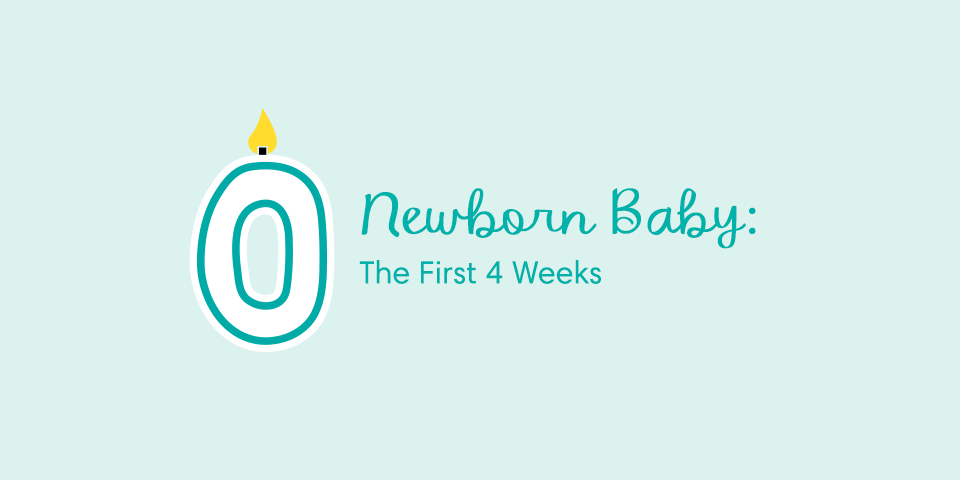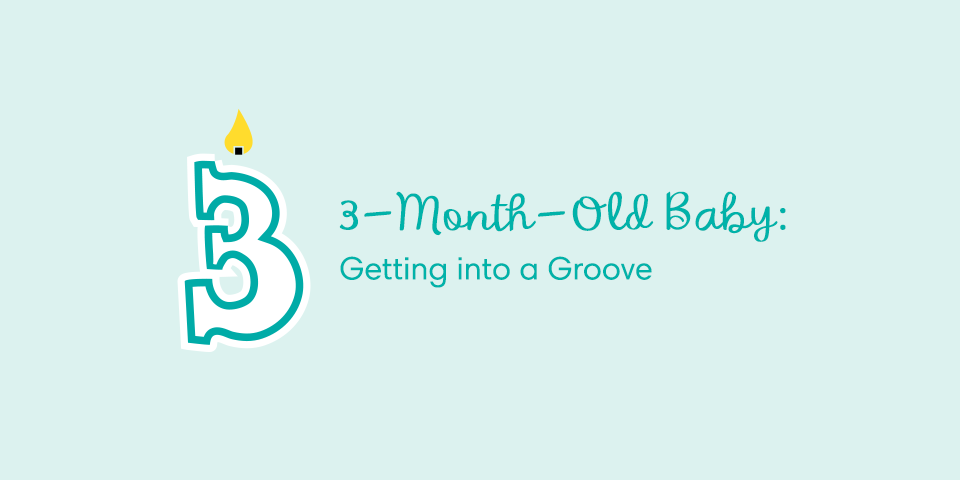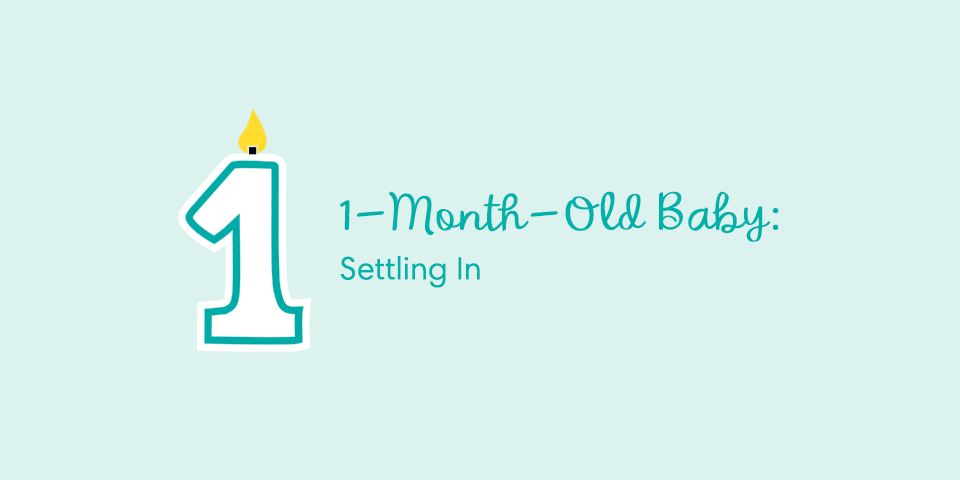Your 2-Month-Old Baby’s Development and Milestones
Key Takeaways
Have you noticed that your tiny newborn isn't so tiny anymore? There are many exciting growth and developmental milestones to look forward to once your baby turns 2 months old, and we’re providing a preview of some of the ones you’ll definitely want to watch for. We’ll also cover how to deal with common health concerns like diaper rash and coughs. If you’re returning to work soon, take a look at the tips and insights we've included to help make this transition go smoothly for both you and your baby.
Baby Development Milestones for a 2-Month-Old
This month will be full of discovery for your baby as they become more and more aware of the world around them. Here are some of the baby development milestones your 2-month-old baby may be approaching.
Growth and Physical Development
During these early months, babies tend to grow about 1 to 1 1/2 inches in length and gain about 1 1/2 to 2 pounds in weight each month. Your baby’s healthcare provider will monitor your baby's growth rate at each checkup, noting your 2-month-old baby’s weight, length, and head circumference to make sure everything is on track. Read more about how baby growth charts are used in your baby's first 24 months.
And there's more news on growth: The soft spots on your baby's head, called the fontanelles, will begin to harden as the bones of your baby's head fuse together.
Watch Those Fingers and Toes
You may have noticed that your baby's nails seem to grow at the speed of light. You'll likely have to clip or file your baby's fingernails about once a week, and their toenails about twice a month. You may not have to worry about reminding yourself—you'll know it's time when you or your baby get scratched! Here are some tips on how to care for your baby's nails:
Senses: Seeing the World in Color
What can babies see at 2 months old? A lot more than they could in the previous months! At 2 months old, your baby’s vision is improving. They will start to recognize objects and will love to look at familiar human faces, especially their parents’. In earlier weeks, your baby may have been drawn to simple patterns with straight lines, but soon they'll start to notice circular shapes and patterns such as bull's-eyes and spirals. Your little one is starting to see colors better, too.
How far can a 2-month-old see? Not that far just yet, although your little one will enjoy gazing at things in the distance when you head outside. Help them learn by saying aloud the names of the different objects they see, naming anything that catches their eyes, like a tree, squirrel, or playground.
Movement: Baby Squats
Although many of your baby's movements are still reflexive, your little one will gradually learn to control more of what they do. For a while they may seem less active as some of their early reflexes fade, but new movements will start appearing that are more purposeful.
The kicks your baby may have started practicing last month will start to gather force, as you might discover if they accidentally kick you. In the coming weeks, they'll gain control of bending and straightening their knees. If you hold them upright with their feet on the ground, they might crouch down and then “stand”—and they'll soon realize they can bounce.
Your baby's hand and finger skills are also developing. Your little one may be spending more and more time with their hands unclenched, and they'll likely be fascinated by their hands as they pass by in front of them. They'll slowly develop the ability to bring their hands to their mouth—initially it might happen by accident, but eventually they will place their hands in their mouth on purpose as sucking their knuckles will be soothing. If you put a rattle in their hand they might hold onto it and even shake it, but—watch out!—they'll drop it when they get bored.
All that tummy time they’ve been putting in (with you closely supervising) will slowly start to pay off. Around this month or next, your baby will be able to push up off their arms and briefly hold their chest and head up. This is big news because it's a step toward greater independence for your little one. Gaining this skill will mean being able to look around at whatever interests them, even when they’re lying on their tummy.
Personality: Muh-muh-muh-muh
Your baby's personality will reveal itself more and more each day. It will start to show in the way they communicate using facial expressions, vocalizations, and even gestures. For example, if you smile at them and they feel happy, they might smile right back at you. Around this time, they might start to happily amuse themselves by making all kinds of strange new sounds. You might hear “muh-muh” and “bah-bah,” and “aahs” and “oohs.” Have conversations with them repeating these sounds back to them.
“Baby talk” is important at this stage, but add in real words, too. All along, they will be learning that conversation is a two-way street where each person takes turns, and each contribution is important. As the weeks progress, your baby will be more alert to your tone of voice and will be able to get an idea of your mood by how you talk to them. Your voice also helps signal what's to come, so tell them what you're doing when you're changing their diaper, taking them out for a walk, or bathing them.
Soon your baby won't only be smiling: They'll be squealing or laughing in delight. But don't be surprised if your baby isn't as responsive to strangers. Parents and siblings will be your baby’s favorites, and probably other regular visitors. Just like adults, your little one has their preferences, too!
Activities for Supporting Your 2-Month-Old Baby’s Development
Playing and interacting with you will have a huge role in your baby's brain development and early learning. If you’re wondering what a 2-month-old “should” be doing or what to do with your baby all day, here are some activities you could do together:
Feeding Your 2-Month-Old Baby
Two-month-old babies need to be fed whenever they’re hungry, so your 2-month-old’s feeding schedule should be based on their hunger signs. Your baby will show you they’re ready to eat by making sucking motions, moving their hands to their mouth, whimpering, or flexing their arms and hands. And for a rough idea of how often a 2-month-old baby eats, that's usually about six to eight times a day.
It's best to focus on your baby’s signs of fullness to know when they’re done feeding rather than worrying about how much a 2-month-old “should” eat. Keep an eye out for the signs they’ve had enough, such as slowing down, stopping sucking, or turning away. You can probably tell your baby is generally eating well if they doze off after a feeding but seems alert, content, and active between feedings.
If you’re wondering how long “should” a 2-month-old sleep at night without eating, at this stage, babies often sleep longer at night and need feeding less often. So, your baby may be able to sleep for a longer stretch before a nighttime feeding. You might be able to skip one middle-of-the-night feeding; as your baby’s stomach capacity grows, they may not be hungry again until early morning.
Tracking Wet and Dirty Diapers
The number of diapers you change gives you clues about whether your baby is healthy and is getting enough to eat. Your baby may pee anywhere from once every couple of hours to only once every four to six hours.
If you’re asking yourself “How many wet diapers does a 2-month-old produce,” there is no exact number since every baby is different. However, fewer than six wet diapers may be a sign of mild dehydration. Pay attention to how many diapers your baby typically goes through. If there is a significant drop in the number of wet diapers or your baby’s mouth seems dry, they may be dehydrated. If you’re in any doubt, consult your baby’s healthcare provider.
There is no “correct” number when it comes to poopy diapers either. So, don’t focus on how much your 2-month-old “should” poop since the frequency can vary. Two-month-old babies can poop anywhere from several times a day to only once a week. If your baby is pooping less than normal but the stools are soft and your baby is otherwise healthy, there may not be any cause for concern. Still, if you’re worried, your baby’s healthcare provider will be able to check whether everything is OK.
As you’ve no doubt realized, your baby’s going through plenty of diapers. If you haven’t already, don’t forget to download the Pampers Rewards app so you can start earning Pampers cash, earn $10 reward after 10 diaper scans. Not only that, but the app can also help you keep track of your baby’s development and provide useful insights to help guide you in your parenting journey.
A 2-Month-Old’s Sleep Schedule: How Much Sleep Does Your Baby Need?
Are you asking yourself, “How many hours ‘should’ a 2-month-old baby sleep”? At 2 months old, your newborn baby may sleep about 14 to 17 hours over a 24-hour period. This is just a general range, and your 2-month-old baby’s sleep and nap schedule may be slightly different.
So, how long “should” a 2-month-old sleep at night or nap during the day? Your baby may spend more time alert and awake during the day, and although they may want fewer naps, these naps might be a little longer in duration. At this stage, some (but not all) babies even manage to sleep through the night, meaning about six to eight hours in one stretch.
Good sleep routines—regular bedtimes and naptimes, and restful sleeping periods—give your 2-month-old a great start in life, contributing to their general health and well-being. Although it can take a while for evening routines to become established, you can help your baby head in the right direction by making nighttime feeds as quiet as possible. For example, keep the lighting low, don’t speak much or loudly, and after the feeding and a quick diaper change put them right back to sleep on their back to help prevent SIDS (sudden infant death syndrome).
Get Help Setting Up a Bedtime Routine
To help you establish a consistent bedtime routine, check out the Smart Sleep Coach by Pampers. Codeveloped with pediatric sleep experts and packed with articles that explain your baby’s development, the Smart Sleep Coach app includes a powerful sleep tracking tool that suggests the best times for your baby to nap and sleep. Plus, the Smart Sleep Coach’s exclusive algorithm customizes sleep-coaching approaches based on your input and your baby’s unique sleep patterns.
A Day in the Life of Your 2-Month-Old Baby
Your 2-month-old baby’s daily schedule may include simple routines for sleeping, feeding, bathing, and playing. Here’s one example of what a typical day might look like:
Your Baby’s Health
Some health issues you may encounter this month may include:
Development Tips for Your Baby This Month
Here are some tips that can help you bond with your 2-month-old baby and foster a feeling of safety and security, as well as contribute to their well-being and healthy intellectual development:
Items You Will Need This Month
You may already own some necessary baby gear like a crib, changing table, and stroller, but here are some additional items it may be worth purchasing if you haven’t already:
FAQs at a Glance
Two-month-old babies can typically see at least 12 inches away, maybe even up to 2 feet or more. You'll know they can see further when you catch your baby smiling when you walk to the other side of the room, or when you see them studying one of their toys on the floor. In the next few months, you might notice that their distance vision has improved if you see them staring out the window, for example.
Your Life as a Parent: Returning to Work
Depending on your situation, different factors may come into play as you decide if and when to go back to work, including your finances, maternity leave options, and general family considerations. If you can, allow yourself some flexibility as you may change your mind about your return to work when the time comes. Whenever you do return to work, it’s natural to feel sad, anxious, or concerned about how your baby will adjust. If your partner is not staying home with your baby, the key is to find child care that you feel comfortable with and that your baby thrives under. You might also consider getting additional help at home so you can spend that precious home time with your baby without additional distractions.
Organizing Child Care
You may have multiple sources and forms of child care that you could consider, including
As you search for child care, focus on ensuring that your baby will be happy and developing well under the care you select. Ask other parents or your baby’s healthcare provider for referrals. Speak to potential caregivers at length, observe them with your baby for a day or two, check their references and do background checks, and trust your instincts. You should always keep a watchful eye that your baby is doing well and reevaluate your choice if needed.
Expressing Breast Milk at Work
Returning to work can be stressful for some women and may reduce your breast milk supply (as may other sources of stress), particularly if you are not able to pump as much as you would like. By law, your employer must allow you time and a space—other than a bathroom—for you to express breast milk until your baby turns 1 year old. If you are concerned your milk supply may be running low, read up on how to increase breast milk supply and contact your healthcare provider or lactation consultant for help.
Finding Help at Home
As you return to work—or simply because you need an extra pair of helping hands—you may need help with cooking, household chores, or errands. Here are some things to keep in mind:
Checklist for This Month
If you’re returning to work, finalize your child-care plans.
How We Wrote This Article The information in this article is based on the expert advice found in trusted medical and government sources, such as the American Academy of Pediatrics and the American College of Obstetricians and Gynecologists. You can find a full list of sources used for this article below. The content on this page should not replace professional medical advice. Always consult medical professionals for full diagnosis and treatment.
- American Academy of Pediatrics. Caring for Your Baby and Young Child: Birth to Age 5, 7th ed. (New York: Bantam Books, 2019).
- healthychildren.org. “Baby Birthmarks & Rashes.”
- healthychildren.org. “Healthy Habits to Master in Your Baby’s First Two Years.”
- healthychildren.org. “Hearing & Making Sounds: Your Baby's Milestones.”
- healthychildren.org. “Heat Rash.”
- healthychildren.org. “Nail Care: Fingers and Toes.”
- healthychildren.org. “Movement Milestones: Birth to 3 Months.”
- healthychildren.org. “Physical Appearance and Growth: 1 to 3 Months.”
- healthychildren.org. “Nailing It: How to Trim Your Baby's Fingernails.”
- healthychildren.org. “Pooping By the Numbers.”
- Kids Health. “Feeding Your 1- to 3-Month-Old.”
- Kids Health. “Communication and Your 1- to 3-Month-Old.”
- Kids Health. “Learning, Play, and Your 1- to 3-Month-Old.”
- Kids Health. “Movement, Coordination, and Your 1- to 3-Month-Old.”
- Kids Health. “Sleep and Your 1- to 3-Month-Old.”
- Kids Health. “Your Baby's Growth: 3 Months.”
- Kids Health. “Your Baby's Hearing, Vision, and Other Senses: 2 Months.”
- Mayo Clinic. “Is Air Travel Safe for an Infant?”


